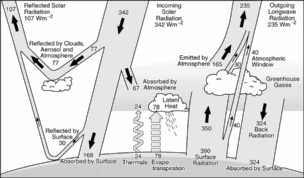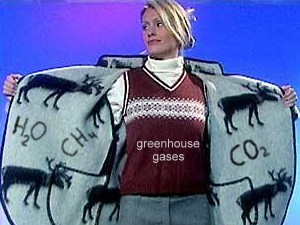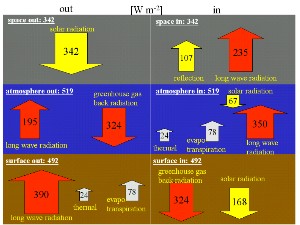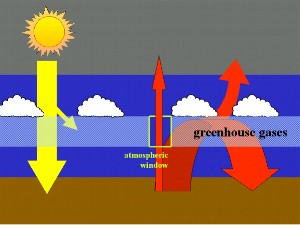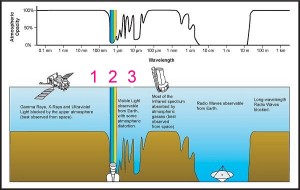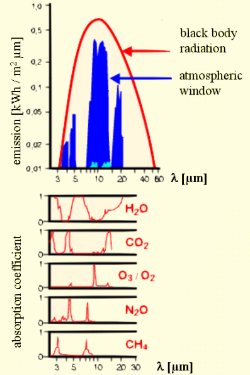 > ENC Master > Climate Encyclopaedia > Lower Atmosphere > more > 2. Radiation & greenhouse gases > - radiation
> ENC Master > Climate Encyclopaedia > Lower Atmosphere > more > 2. Radiation & greenhouse gases > - radiation
 |
|
|
|
Lower AtmosphereRead more!significant changes! |
Earth's radiation budget and Greenhouse EffectThe climate system is driven by the energy of solar radiation. Only a certain fraction of this energy reaches the Earth's surface and leads to a warming. Other fractions are reflected or absorbed by the atmosphere. How exactly does the radiation system work?
|
|
The reality is a bit more complicated, because the oceans react very slowly to temperature changes. They are inert. While the atmosphere becomes warmer rapidly, the oceans take up the heat slowly and do not warm up immediately. Therefore, for a certain time (one turnover of the oceans takes about 1000 years) the Earth can be in a disequilibrium, before also the oceans reach the state of equilibrium. Radiation budgets as shown in the image above are therefore and also for other unknowns not exact, but have an uncertainty of 10-20%. In the following sections however, we assume an equilibrium.
|
|
The role of greenhouse gasesThe role of greenhouse gases is the one of a pullover in cold winter days. If we would not wear clothes in winter, our body would cool down and freeze. However, the pullover does neither make the surrounding warmer, nor makes our body produce more energy, nor produces energy itself. It simple reflects back a part of the energy of our body and causes therefore a warm layer between the pullover and the skin. This is exactly what greenhouse gases do. An increasing greenhouse effect means, that more heat accumulates above the Earth surface before it is released to the space. It does not mean, that more energy reaches the Earth surface.
|
Understanding the energy budgetWe measure the energy transferred to or emitted from a part of the system in W / m2. First let us show, that in each part of the system the same amount of energy comes in and goes out (we simplify and leave out the retarding effect of the oceans) : 342 W / m2 come from the solar radiation to the outer atmosphere. 107 are directly reflected either from clouds or from the Earth surface. The fraction of the sunlight, which is directly reflected back to the space without any interaction is called the Earth's albedo. It is roughly 30%. Definition of albedo: The ratio of the light reflected by a body to the light received by it. Albedo values range from 0 (pitch black) to 1 (perfect reflector). |
|
|
The Earth's albedo is about 0,3. The best reflectors are the clouds and the polar ice shields. The remaining 235 W/m2 interact either with the atmosphere or with the Earth's surface and come back to the space as long wave radiation.
|
|
If we discuss the budget for the atmosphere we have to consider, that the atmosphere can either emit its energy to the space or send it back to the Earth's surface. It's the back radiation of the greenhouse gases to the Earth which leads to the fact, that the Earth's surface absorbes more energy (492 W / m2) than the sun brings in. The atmospheric windowOnly 40 W / m2 are directly emitted as long wave radiation from the Earth surface to the space.
|
|
This is, because greenhouse gases do not absorb all wavelengths. There are a few gaps in the overlapping absorption spectra of water (which absorbs roughly 60%), carbon dioxide, methane, nitrous oxide, ozone and the other greenhouse gases. In particular the most important gaps in the water and carbon dioxide absorption are called the atmospheric window. Here, the infrared radiation can disappear like through a window in the roof of a greenhouse.
|
|
Certainly, the analogy of the greenhouse gases to the glass of a greenhouse is not perfect. The gases interact with light, while the glass is a barrier of solid matter and prevents also convection so that heat is retained.
|
|
|
About this page:author: Dr. Elmar Uherek - Max Planck Institute for Chemistry, Mainz
|

